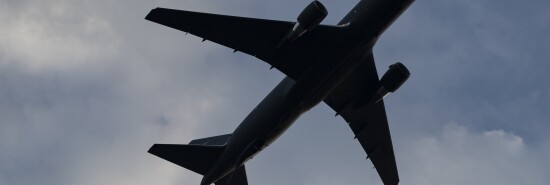
US-Israel air exercises inadvertently highlight divisions in dealing with Iran’s nuclear program
Tom Rogan
Video Embed
The United States and Israel are conducting the latest iteration of their bilateral Juniper Oak military exercise. The intention is to deter Iran from further moves toward weapons-grade purity enrichment of its uranium stocks. Still, Tehran is unlikely to be intimidated.
For a start, tensions between the U.S. and Israel over how to respond to Iran’s nuclear program remain apparent.
WHY ZELENSKY’S NATO MEMBERSHIP COMPLAINT IS UNREASONABLE
U.S. Central Command’s statement on the exercise says that it will test “collective U.S.-Israeli readiness and improves the interoperability of both forces through bilateral cyber incident response, while U.S. F-16’s, KC-10, and KC-46 aircraft support air-to-air refueling, and agile combat employment (offensive air) within Israel.” In contrast, the Israeli Defense Forces say that “the exercise will incorporate a number of scenarios, including long-range strategic striking, the achievement of aerial superiority in the region, and cyber defense in the face of a variety of threats and challenges.”
Note the IDF’s specific identification of “long-range strategic striking” and “the achievement of air superiority.” That language proves that the exercise is focused on strikes deep inside Iran. The air superiority reference is also relevant in that at least localized air superiority would be necessary to establish conditions for a multi-day bombing campaign against Iran’s nuclear program. It’s notable that Central Command doesn’t want to explicitly identify this deep strike and air superiority focus. That likely reflects the Biden administration’s desire to maintain what it regards as ideal conditions for talks with Iran toward establishing an interim nuclear accord.
Even then, the assets deployed or, more accurately, not deployed in this exercise also indicate U.S.-Israeli divisions.
True, the U.S. has sent KC-46 refueler aircraft as part of the exercise (the IDF will begin receiving its own KC-46s in 2025). The KC-46 is viewed as crucial to any prospective bombing campaign against Iran’s nuclear program because of the speed at which it can refuel multiple aircraft and because of its range and defensive capabilities.
However, the U.S. is only deploying F-16s as part of its contribution to the exercise’s strike component. And while F-16s might participate in any U.S. military contribution to an air campaign against Iran’s nuclear program, they would likely only do so in a secondary role to U.S. F-35 fighter jets. While distinctly overrated in terms of their utility for a U.S. war with China, the F-35’s stealth profile and the range requirements vis-a-vis an Iran campaign (if operating from U.S. aircraft carriers in the Persian Gulf or the Gulf of Oman) make it ideal for this kind of campaign. Note that the U.S. Navy’s aviation forces do not appear to be involved in Juniper Oak 23.3. Equally important, any U.S. participation in an air campaign against Iran’s nuclear program would also very likely entail B-2 and B-1B bombers. Those aircraft have also not been deployed as part of this exercise.
Then comes the final caveat. While an air campaign could successfully target many Iranian nuclear facilities, Iran’s underground facility at Fordow (less than 20 miles from a key regime Shia theological center in Qom) and elements of the separate Natanz facility would likely require ground force operations.
The IDF’s top special forces units, Sayeret Matkal (Army-Israeli Prime Minister Benjamin Netanyahu is a former member, and his fallen brother is the unit’s emblematic hero), Shaldag (Air Force, a unit which has previously caused problems for Bashar al-Assad), and Shayetet 13 (the IDF’s Navy SEALs equivalent, which just got a new commander) would likely provide the foundation of any ground action. They would work alongside elements of Israel’s Mossad and Aman intelligence services. That said, the scale of forces needed to penetrate and destroy any Iranian underground facilities while holding in situ would probably require an even greater force deployment. Namely, paratroopers from the IDF’s 35th Paratrooper Brigade.
Crucially, any U.S. contribution would also likely involve the Army’s 75th Ranger Battalion, certain CIA/Army intelligence units, AC-130J Ghostrider gunships from the U.S. Air Force 1st Special Operations Wing, and personnel from the Air Force’s 24th Special Operations Wing. None of these units, at least in the military’s public declaration, have been deployed to Israel for Juniper Oak 23.3.
CLICK HERE TO READ MORE FROM THE WASHINGTON EXAMINER
Until those forces are deployed for future exercises, Juniper Oak will say as much about U.S.-Israeli tensions over how to deal with Iran’s nuclear program as they do about mutual concern over that threat.
Iran’s military leadership will know as much. Which, perhaps, is why the U.S. is sending what it is sending for this exercise and isn’t sending what it otherwise could.
